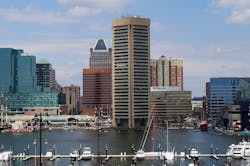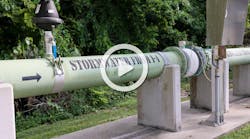New Report Shows Baltimore Harbor is Cleaner
A new water quality report written by the Waterfront Partnership of Baltimore revealed that water quality is improving.
This report marks 10 years since the effort to clean up the harbor began, according to Chairman Emeritus and board member Mike Hankin. It details steps taken to reduce pollutants and bacteria, including tracking water quality, restoration projects, and ecosystem health.
“In 2010, I stood alongside the mayor and challenged the City – its businesses, elected officials, nonprofits and philanthropic institutions – to come together in pursuit of an ambitious goal: a shable and swimmable Baltimore Harbor,” said Hankin. “And to do it by 2020, just ten years away. Sure, some thought the idea was crazy, but many more said it could be done, and the believers formed a community around this idea and got to work.”
According to the data, water quality scores for fecal bacteria have improved significantly.
The report details that some areas of the harbor are now safe for swimming, especially in dry weather, but that this should not occur in areas where sediment on the bottom of the harbor is disturbed.
81% of 36 testing stations in Baltimore City have shown improving bacteria scores. Levels of other pollutants in the waterway, such as sediment and nitrogen, are not dropping.
"Just a few weeks ago, I was filming a video by the Inner Harbor and I saw something I had never seen in my life. I saw jellyfish, crabs and fish swimming actively in the harbor,” said Baltimore City Council President Brandon Scott.
The Jones Falls in particular has shown improvement in water quality. This is also the largest stream that flows into the Inner Harbor and carries pollutants from both the city and Baltimore County, according to the report.
The report also details that the harbor still experiences pollution caused by storm water runoff and sewage leaks. The city’s sewer system is approximately 90 years old and in desperate need of repairs. According to the report, the city has invested significantly less in storm water and sewage maintenance.
A $430 million project underway at the Back River Treatment Plant is expected to significantly reduce sewage spills, which should be completed by next year, added the report.


